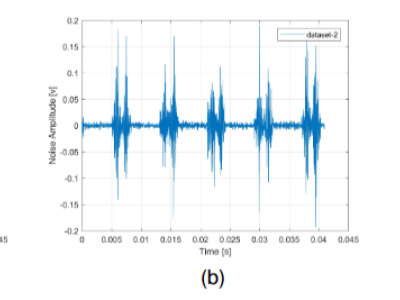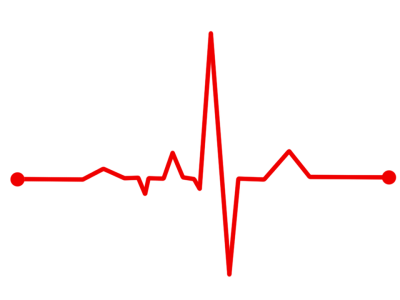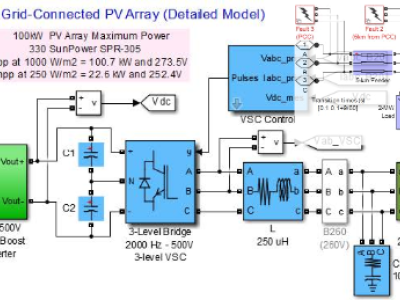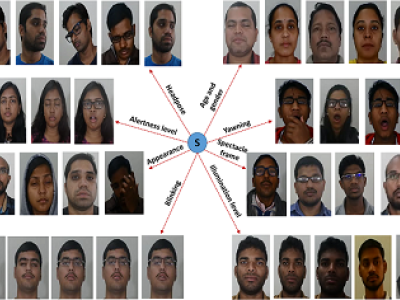Cyclostationary Impulse Noise Dataset

- Citation Author(s):
-
Po-Heng Chou (Research Center for Information Technology Innovation (CITI), Academia Sinica)You-Jie Peng (Graduate Institute of Communication Engineering, College of Electrical Engineering and Computer Science (GICE), National Taiwan University (NTU))Chun-Yuan Huang (Institute of Communication Engineering (ICE), National Sun Yat-sen University (NSYSU))Hen-Wai Tsao (Graduate Institute of Communication Engineering, College of Electrical Engineering and Computer Science (GICE), National Taiwan University (NTU))Yu Tsao (Research Center for Information Technology Innovation (CITI), Academia Sinica)
- Submitted by:
- Ying-Ren Chien
- Last updated:
- DOI:
- 10.21227/a1ns-hq82
- Data Format:
 357 views
357 views
- Categories:
- Keywords:
Abstract
Dataset1
The methodology employed for modeling Gaussian stationary pulse noise, utilizing spectral filters, follows a consistent approach. Within each cycle, the noise behavior is partitioned into three distinct regions, each characterized by specific noise power levels and spectral profiles [Ref 1]. The piecewise spectral cyclostationary Gaussian model (PSCGM) demonstrates the ability to capture time-varying variations in variance, adding a dynamic dimension to the modeling process. By adhering to the parameters outlined in LV14, we proceed to generate a noise trace based on the PSCGM model. This trace is sampled at a rate of 400 kHz, with each trace spanning a length of 16,384 data points (equivalent to 40.96 milliseconds). The overall dataset comprises a total of 15,000 individual instances, meticulously generated to serve as valuable training data for deep learning applications.
[Ref 1] IEEE Standard for Low-Frequency (less than 500 kHz) Narrowband Power Line Communications for Smart Grid Applications, IEEE Std 1901.2-2013, 2013EEndard for Low-Frequency (less than 500 kHz) Narrowband
Dataset2
We implemented the generation of a dataset2 based on the cyclic stationary noise of the simplified frequency-shift filter [Ref 2]. In contrast to the original paper, where the noise sequence had a length of only 3,200, we set the size of each input noise data to be 16,384 samples. This allows the deep learning model to effectively learn the pulse intervals between data and the correlation between noise sequences. Thus, we used Matlab to generate five cycles of noise (totaling 16,000 points), and combined them with an additional 384 samples to create a time-domain sequence of 16,384 points. For each noise instance, the sampling rate was set at 400 kHz. In total, we used 15,000 instances for training.
[Ref 2] S. Moaveninejad et al., “Simpler than FRESH filter: A parametric approach for cyclostationary noise generation in NB-PLC,” IEEE Commun. Lett., vol. 24, no. 7, pp. 1373–1377, July 2020, doi: 10.1109/LCOMM.2020.2985130
S.Moaveninejadetal.,“SimplerthanFRESHfilter:ApmetricapproachforcyclostationarynoisegenerationinNB-PLC,”Commun.Lett.,vol.24,no.7,pp.1373–1377,July20
doi: 10.1109/LCOMM.2020.2985130
Dataset3
We utilized the analog front end (AFE) of the Texas Instruments Narrowband Power Line Communication Development Kit TIDM-TMDSPLCKIT-V3 for measuring noise. To gather noise from the power line channel, the measurement circuit first passes through a coupling transformer, which isolates the mains voltage components of 110V/220V, preventing damage to the measurement instrument and enabling data transmission and reception through the power line communication channel. Additionally, this coupling circuit ensures impedance matching and protects the measurement instrument from sudden high-voltage spikes or rapid transient pulses. After the signal passes through the coupling circuit, the Rx Line connects to the analog bandpass filter. The signal, after passing through the filter, allows us to measure noise signals between 0 to 625 kHz.
For data collection, we used the Tektronix DPO 2024B digital oscilloscope and probes to gather noise data. The sampling frequency was set at 625 kHz, and the measurements were conducted on June 13, 2021, at the Electrical Engineering Building Room 330 Laboratory of National Taiwan University. During the measurements, various loads on the powerline have been tested to simulate an environment for generating cyclic pulses. In total, we collected 2.4576x 10^8 data points, including 15,000 instances, with each measured noise having a length of 16,384.
Instructions:
Each row in the CVS file contains 16,384 samples (40.96 ms) and there are 15,000 records in total.








